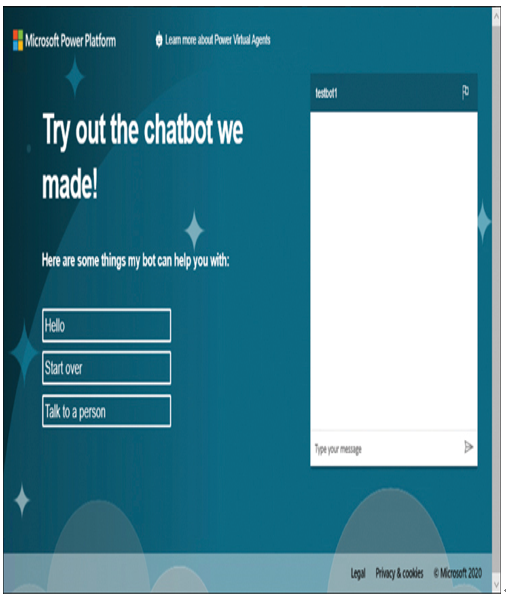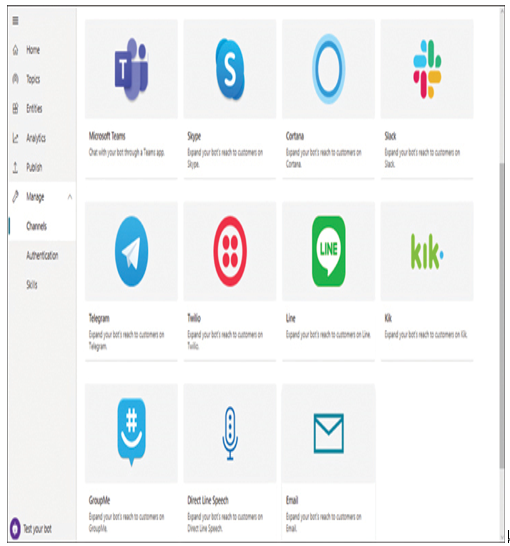Artificial intelligence
The ultimate goal of any chatbot is to make the customers believe that they are conversing with a real person. That might or might not be possible, depending on the effort put into the bot’s development and on the sophistication of the customer, but Power Virtual Agents includes AI capabilities that allow it to engage the customer in realistic exchanges.
For example, the phrases that the developer supplies—the phrases that the customer can use in the conversation with the bot—might include “help me,” “I need help,” and many others. However, there are any number of other variations that a customer might also use, which the developer could not possibly anticipate. By supplying Power Virtual Agents with a selection of common phrases, it uses AI to extrapolate others and accommodate many of the alternatives that customers might supply.
Taking action
Because it is part of the Power Platform toolkit, Power Virtual Agents can also work in conjunction with the other tools. The same connectors that allow Power Apps and Power Automate to interact with outside applications and services are available to Power Virtual Agents as well. This allows chatbots to not just dispense prerecorded information, but also to perform actions in response to customer requests by calling flows or apps and connecting to external data sources.
Exam Tip
Candidates for the PL-900 exam should be conscious of the warnings that Microsoft includes with the Power Virtual Agents documentation, specifying that the product is not intended for use in emergency situations or for diagnosing or treating medical conditions, and that Microsoft abjures all responsibility for situations arising from the use of chatbots created by Power Virtual Agents subscribers.
Describe where you can publish chatbots
Publishing a chatbot makes it available to consumers. Whenever developers make changes to chatbots, they must republish them for consumers to see those changes. When a developer publishes a chatbot for the first time, Power Virtual Agents makes it available for testing on a demo website, as shown in Figure 6-2.

FIGURE 6-2 Demo website for Power Virtual Agents
Arguably, the place where consumers are most likely to encounter chatbots is on websites, but developers can publish their chatbots to many types of platforms other than websites, including internal messaging platforms, such as Microsoft Teams; mobile apps; and social media. Power Virtual Agents refers to these places of publication as channels, some of which are shown in the Power Virtual Agents portal, as shown in Figure 6-3.

FIGURE 6-3 The Channels page in the Power Virtual Agents portal
Need More Review? Channels
For a complete list of the channels supported by Power Virtual Agents, expand the Manage menu item in the navigation pane of the Power Virtual Agents portal and select Channels.
Developers can publish a single chatbot to more than one channel. When a developer publishes a chatbot to multiple channels, modifying the bot and republishing it causes it to be refreshed on all the channels in which it appears.

